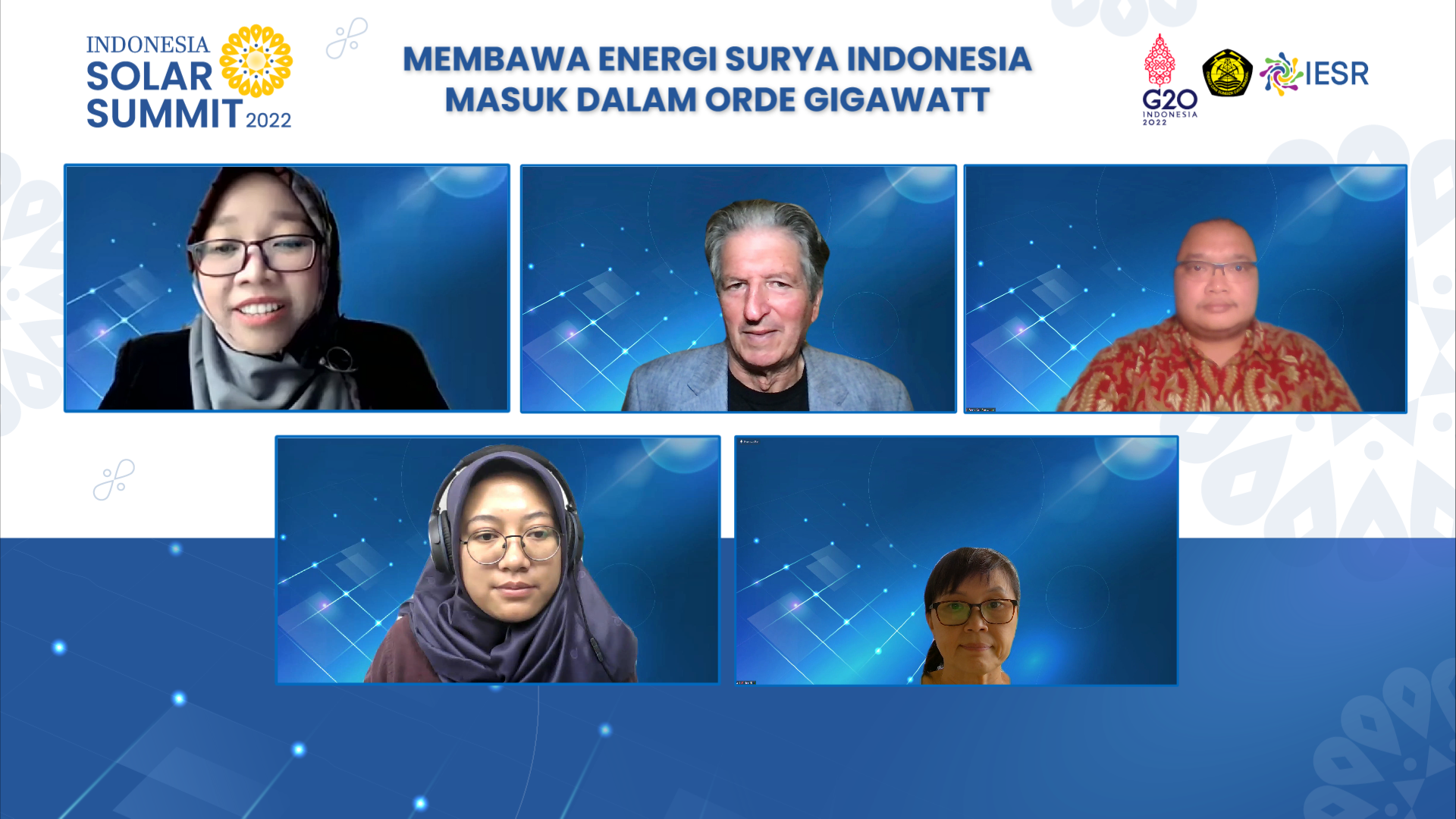Jakarta, 21 April 2022 – The Indonesian government has set a national strategic project to install 3.6 GW of rooftop solar power plants by 2025 to achieve the renewable energy mix target of 23%. The availability of solar power plants or pembangkit listrik tenaga surya (PLTS) technology, affordable solar power plant financing mechanisms, and the development of rooftop solar power plants, floating solar power plants, and large-scale solar power plants will support the achievement of these targets.
The average selling price of solar modules has decreased significantly from around US$ 4.12/W in 2008 to US$ 0.17/W in 2020. The International Energy Agency reports that solar power plants are currently the cheapest source of electricity in most countries. Even in Indonesia, the results of solar power plants auctions in For example, in Indonesia, the last solar power plants auction results resulted in electricity costs of USD 0.04/kWh, lower than the average coal power plant, which costs USD 0.05-0.07/kWh.
IESR, in collaboration with CASE, GIZ, and the Ministry of National Development Planning/Bappenas, held a Solar Energy Technologies workshop attended by several experts, namely Professor Martin Green, Scientia Professor at the University of New South Wales, Sydney, and Director of the Australian Center for Advanced Photovoltaics; Noor Titan Putri Hartono, Postdoctoral Researcher at Helmholtz-Zentrum Berlin Department of Active Materials and Stable Perovskite Solar; Beny Adi Purwanto Representative from the Directorate General of Metal, Machinery, Transportation Equipment and Electronics Industry, Ministry of Industry of the Republic of Indonesia; and Jen Tan, CEO of Sembcorp Energy for Indonesia.
Accelerating climate crisis mitigation actions is very important for sustainable energy development. Prof. Martin-Green explained that the choice of renewable energy technology, especially solar energy, is available to be developed to achieve Indonesia’s decarbonization.
“Solar cell technology is developing very rapidly. So if we want to start building solar power plant component factories, there are recommendations for solar cell technology according to the industry in Indonesia. However, the main challenge is choosing where the solar power plants will be installed, which requires high radiation to be absorbed by the solar panels,” said Martin.
In addition to silicon as one of the main materials for solar cells, Perovskite Solar Cells (PSC) is a promising choice for PV mini-grid technology. Noor Titana revealed that as the second-largest tin producer, Indonesia has the opportunity to develop Perovskite Solar Cells (PSC). PSCs have high energy absorption efficiency above 20%, for example, Perovskite, CIGS, and CdTe. Interest in using PSCs continues to grow due to their more competitive nature and costs. Techno-economic analysis in 2017 showed that PSC is cheaper, assuming the same degradation rate as crystalline silicon with a lifespan of up to 20-25 years.
Noor said some of the challenges faced in the development of PSCs.
“Some of the challenges to realizing PSCs are that perovskite is unstable and has a short lifespan compared to silicon. In addition, high-performance PSCs contain toxic and water-soluble wastes. However, as the 2nd largest tin producer, Indonesia still has the opportunity to develop PSC in the future,” Noor added.
In addition to technology, affordable PV mini-grid financing mechanisms are also developing. However, limited financing options often hinder public interest in installing rooftop solar power plants. Various parties are trying to provide access to communal solar power plant funding to overcome this.
“The trend in solar modules is also the most widely used domestically with a capacity below 450 Wp. On the other hand, solar power plants require solar modules above 500 Wp with higher efficiency solar cells (M6 type solar cells). The production of solar modules with capacities above 500 Wp requires the most up-to-date equipment, so incentives and market guarantees are needed for investment. In the short term, solar module capacity below 450 Wp will be maximized for small-scale solar power plants projects (de-dieselization) and rooftop solar power plants,” said Beny Adi Purwanto, Representative from the Indonesian Ministry of Industry.
In addition to rooftop PV mini-grid, Indonesia needs the development of large-scale PV mini-grid or floating PV mini-grid to achieve the renewable energy mix target by 2025. Furthermore, solar energy investment opportunities at various scales need to encourage more competitive PV mini-grid and improvements in financing quality. Technological innovations also continue to enable PV mini-grid to produce higher energy efficiency. Jen Tan stated this.
“For future sustainability, several important factors need to be considered when installing large-scale solar power plants. One of them is that we must care about the environment because solar power plants could be placed in solar fields or local water catchment areas filled with flora and fauna. In managing large-scale PV mini-grid, tools are also needed for the monitoring process, one of which is related to data acquisition. An incumbent metering service is required through an application programming interface (API) that includes map navigation, global asset display, alarm aggregation, and sustainability statistics,” said Jen Tan.***

